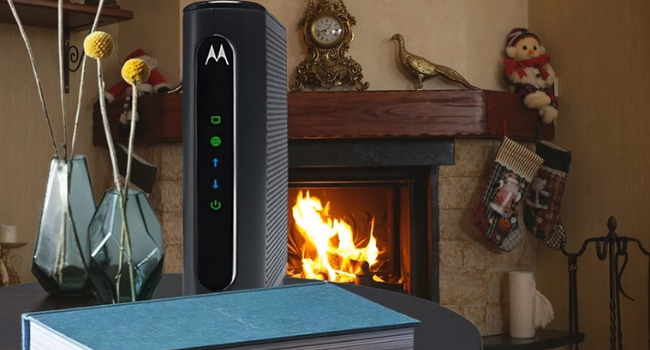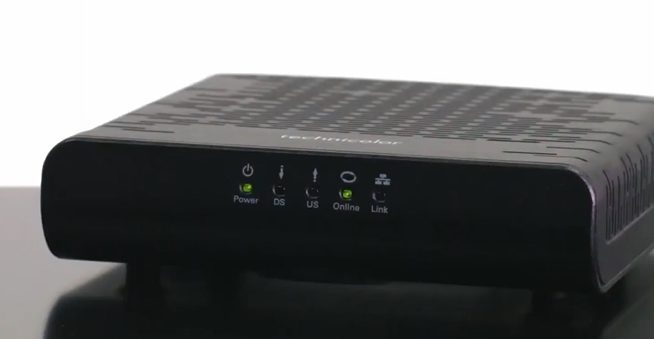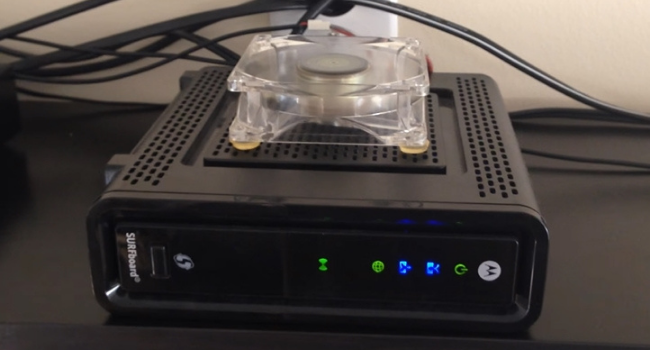It’s hard to imagine a household without any Internet connection. And it’s even harder to survive a day without the internet due to network device malfunctions. Modems are one of these devices. But what happens when the modem goes bad? Can a modem overheat due to long-term usage?
Yes, modems can overheat. Modems are designed to operate at specific temperatures. Environmental conditions, such as high ambient temperatures and elevated operating temperature of the computer or router attached to the modem, may increase the temperature beyond what it is designed for.
Therefore, keeping a modem cool is important. A modem that overheats can fail, causing the network or Internet to slow down or disconnect. You may even need to look for a replacement. While heat buildup is inevitable in modems, you can minimize the risks by keeping it in a place with adequate ventilation. Let’s find out more.
Key Takeaways:
- Dust and debris are one of the major reasons your modem will overheat.
- A quality and working built-in fan will prevent the buildup of heat and prevent overheating.
- Insufficient ventilation will also cause your modem to overheat, so you need proper ventilation to keep it cool.
- The age and model of your modem can also determine the heat buildup, and the best solution is to get an upgrade.
- Climate conditions can cause a modem to overheat, and you should always place it away from direct sunlight and heat.
Can a Modem Overheat?
Yes, your modem can overheat when used, especially during the summer months. If a modem is left on with too many devices connected, it will eventually warm up. It should be fine in most instances if you leave it on for periods, but problems may occur if the overheating is unbearable for the modem components.
Using your modem without an adequate cooling system will lead to overheating. It may result in replacing components. And the cost of this repair may be more than replacing a better cooled, fan-assisted modem.

Therefore, your modem should only be used in environments within the recommended operating temperature to ensure a long and reliable lifespan. Modems should not be placed next to heating vents or in direct sunlight.
Remember, a Modem with zero heating issues delivers better performance in terms of internet speed and energy-efficiency. The simplest and effortless way to reduce any chance of overheating is to get a modem with a built-in fan and avoid models with inefficient power supplies.
What Causes Modems to Overheat?
Modems can overheat, but usually they won’t just drop dead without some sort of warning sign. It is important to recognize these signs as soon as possible so that any major damage can be prevented.
The most likely cause has to do with the fan or lack thereof. If there’s no built-in fan, heat builds up inside the modem and slows down bandwidth transfer.

Also, modems are prone to dust. and when the dust builds up, it interferes with the modem’s efficiency. It can also cause overheating if the vents are clogged.
Below are some major factors your modem will overheat.
Insufficient Ventilation
Insufficient ventilation is the leading cause of modems overheating. When the internal temperature rises past a certain point, the modem will shut down to protect itself. In case of a shutdown, you have to reboot it because it won’t have enough power to send a signal upstream.
You should know that modems or routers generally run well if they receive ample airflow. If these devices are enclosed in a box or several of them are located in a small room, the temperature rises. Being enclosed and separated from fresh air flow means that there is no way for expelled heat to escape.
Therefore, if you notice any sign of overheating with your modem, you should check the positioning and ensure adequate airflow. If the airflow is minimal, you need to take it somewhere it can get exposed to uninterrupted airflow to reduce the heat buildup in the device.
PRO TIPS: Placing the modem on a shelf a few feet off the floor allows proper ventilation to prevent overheating.
Age and Model
One of the most common causes of modem overheating is old age and model. Modems overheat most often when they are over five years old and have a temperature range between 30-40 degrees Celsius (86-104 F).
The truth is that older modems tend to overheat more often, as they don’t cool down like newer models. Overheating can cause your modem to stop functioning altogether or catch on fire in the worst case.
Also, most modem’s internal components are just like any other electronic device; they wear out over time due to wear and tear or faulty manufacturing.
PRO TIP: If you have an older model, say 5 years of age, you should consider an upgrade. A newer model not only prevent overheating, it can also provide faster internet speed.
Climate
Overheating is the leading cause of modem failure, and unfortunately, many variables can cause a modem to overheat. Of these variables, the most important is the climate condition where you live and work.
Suppose you live in a tropical or desert region where the temperatures routinely rise above 80 degrees F. In that case, you need a modem with an internal temperature sensor to shut itself down when necessary to prevent overheating.
It goes without saying that modems can overheat when climate conditions drastically change. Usually, heat is the biggest contributing factor to modem overheating. It can be caused by air conditioning and even keeping the modem under direct sunlight.
PRO TIP: The best way to solve the climate overheating problem you can use AC power or the modem’s internal fan to effectively lower the temperature.
Placing It Near Other Electronic Devices
Placing your modem near other electronic devices, such as a cordless phone, wireless router, baby monitor, or large speakers, can contribute to overheating. Though short-term overheating shouldn’t damage your equipment, over time, it may reduce your modem’s operating speed and potentially cause it to malfunction.
PRO TIP: For optimum performance, you should place the modem away from any other electronics. Keep a good distance between your modem and other devices, and you will notice a significant drop in the heat buildup.
Usage
Most modems become hot after long usage. Cable modems are also known to overheat. They can become too hot when used for long periods.
However, you can help reduce the heat buildup through a proper vent. Also, you can do well to get two modems and switch to another for one to get cool.
While keeping your modem switched OFF for a few minutes sounds fine, it is neither advisable nor a sustainable solution to the problem. So, what should you do? We’ll get into that shortly, but before we move on to solutions, let’s take a quick look at what are the effects of an overheating modem.
Know Also: What Are the Modem Overheating Symptoms?
What Could be the Problem If the Modem is Overheated?
What happens when the modem is overheated? You are likely to encounter many problems in this case. However, you can prevent the problem from occurring if you give attention to the warning signs.

Below are some of the problems you will encounter.
Loss of internet connection
If your modem experiences overheating, this may lead to loss of internet connection. You will not be able to connect or communicate with the modem using any devices. It is frustrating indeed, but there is little you can do.
Also, the problem could be either temporary or permanent. For how long the Internet connection will stay this way depends on how extreme the overheating is and how often it occurs.
Therefore, once the overheating occurs, you can only wait for the modem to cool down before initiating any connection again. Irrespective of how much you try to connect, you mind getting disappointed on every trial.
Slow internet speed
A modem can overheat if it cannot dissipate heat generated by the electronics inside or if the airflow is restricted and unable to cool internal components. If a modem heats up too much, it may slow down the internet speed significantly and even cause your modem to potentially shut down.
You can solve this by turning off all electrical appliances, including your computer and modem, for 15-20 minutes. After this time, plug in your modem first and allow it to stay active for 5 minutes before connecting any device or gadgets.
Hardware failure
The heating elements on a modem can become dangerously hot. The typical symptoms include loss of internet connection, errors in the modem setup, or lack of power to one or both lights on the device. However, hardware failures may be triggered as well.
If a component cools down but continues to work when it heats back up, the chances are that component will not last much longer. When a router overheats, the hardware often takes the brunt of the damage. While repairing or replacing parts on your modem can be time-consuming and expensive, using a firewall or routing software can help prevent this mishap.
How Do I Stop My Modem From Overheating?
If your modem often overheats and you are looking for the right way to solve the issue, you should consider the following.
Reduce environmental heat
When your modem raises its internal temperature, it will start to slow down. The thing is, it’s just trying to cool off. But the problem is that if your modem can’t keep up, you get a slower connection.
You can reduce the environmental temperature around your modem by providing more air space around it. Many people shove their modems into the back corner of their entertainment stand, which adds to the heat problems.
Instead, create a vent space above and below if your modem is in a separate cabinet. Use mesh or other porous items to allow air to pass freely while blocking dust and debris.
Prevent exposure to dust and debris
You can do some pretty simple things to prevent your modem from overheating. One of the most important is not to expose it to dust and debris. The truth is that modems are prone to dust and debris, and too much of it can affect the built-in fan from operating properly.
Dust and debris can get into a modem in many ways, like the back vents, the air intake vents, and more. If a computer fan is placed over the air intake vents, then this will prevent dust and debris from getting in. Another effective way to keep your computer and modem cool is to clean off the dust once in a while using a small brush or use compressed air.
Prevent direct exposure to sunlight
Exposure to heat or heat sources like sunlight can put a lot of stress on a modem. Leaving your modem in direct sunlight for too long can cause the exterior temperature of your modem to rise to dangerous levels and force the internal parts to work harder than they normally would.
In extreme cases, it is possible for the heat from the sun to cause damage to the circuit board inside of your modem. The best way to prevent this kind of damage is to place something between your modem and sunlight.
Any electronic device that is exposed to sunlight has the potential to overheat. To prevent direct exposure to sunlight, place your modem near an open window but keep it away from direct sunlight.
Keep away from other electrical devices
Of course, placing your modem closer to any other electrical appliances such as television, radio, air vents, air conditioner, and many more can cause it to overheat. The best and simplest way to deal with this is to keep your modem away from them. Find a better place to position your modem and ensure you have quality distance with the next device.
Conclusion
Can a modem overheat? Simple answer is yes, but even if it does, not all hope is lost. You won’t have to rush down to the nearest hardware shop to purchase a new one. This article introduces you to way you can prevent modems from overheating, and surprisingly, none of them require any prior expertise.
So try them out one by one in case of overheating, and if that doesn’t work, you’ll need to contact the ISP or a professional about what’s wrong with your modem.
